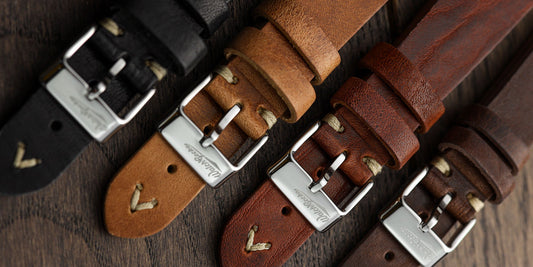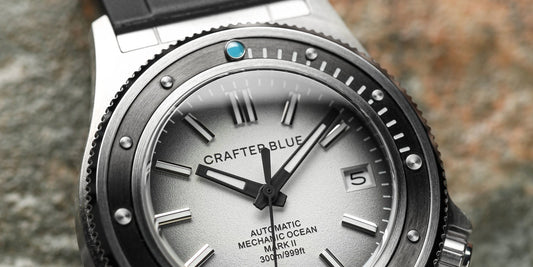A visit to Japan is always a cultural overload. It’s a country that has given so much to the world yet remains defiantly and resolutely different. Nowhere feels more foreign but at the same time there are few places that are more welcoming; a contradiction captured perfectly by the Oscar-winning film Lost in Translation.
There’s a lot about Japanese culture that we’ll never understand – karaoke being high up on that particular list – but Japan has nonetheless permeated our entire world. And that’s particularly relevant when it comes to watches, with the Japanese watch industry mirroring its automotive equivalent by offering us products that are more affordable and often of even better quality than the established European benchmarks.
But unlike the Japanese car industry, which boasts a significant number of major players, there are fewer protagonists in the world of Japanese watches, with just one name paramount: Seiko. Actually, make that two names, because there’s Grand Seiko as well: just like Seiko, only better.
That’s not to put down any of the other Japanese watch companies: I’m a huge fan of Citizen (the titanium Ray Mears Promaster is one of my favourite watches in my collection) and Casio probably sells more watches than anyone else in the world, with good reason. But it’s Kintaro Hattori’s company, founded all the way back in 1881, that steals the show.
“Seiko” means “exquisite“ in Japanese and this already underlines the elegant simplicity of Seiko watches, which seem to hit the perfect intersection between quality and affordability. They’re prized enough to be collected, but not so valuable that people can’t wear them daily or feel afraid to modify them. In fact, the Seiko mod scene has created a whole new subculture of watch collecting; the horological equivalent of hot-rodders or car tuners – but quieter and more socially acceptable.
Because if there’s one thing that characterises Japanese culture, it’s back-breaking politeness. Quite literally, as Japanese people bow so often when meeting people that you worry their spines will snap. So mortified are the Japanese at the prospect of social embarrassment that right up until the end of the nineteenth century, a nobleman who had done anything remotely dishonourable would rather ritually disembowel himself than live with the shame.
It’s a psyche so complex that even Japanese people can struggle to explain exactly how their countrymen think. But one thing they all agree on is that hard work and the pursuit of technical excellence is a constant inspiration. Essentially, the Japanese are hard-wired to be engineers and innovators.
For my recent trip to Japan, to Nagoya and Kobe – two of the biggest cities in the country – I took along two classic Japanese watches: one of which was mine and the other of which was borrowed.
My watch is the SKX009 (the Pepsi-bezelled version of the SKX007): a mainstay of the line-up that has now been discontinued. The other Seiko is the ‘Willard’ - officially known as the Prospex Divers: a reissue of the watch that originally came out in the 1970s and was worn by Martin Sheen’s character (Captain Willard) in “Apocalypse Now”.
Two Japanese icons, in other words. They would be accompanying me on my journey through some of Japan’s industrial powerhouses, and the surprisingly rustic hinterland that links them.
Nagoya, as well as being home to the Asahi brewery – another famous Japanese export – is also the HQ of Toyota: for many years, the biggest carmaker in the world. The Toyota Corolla was still the most-sold individual model in the world last year, with 1.1 million of them finding new homes. White and red are Toyota’s corporate colours, echoing the hues of the Japanese flag, so it made sense to take the bright 009 (which sports a similar shade of red) to meet some other Japanese engineering legends, many of which are housed in Toyota’s incredible museum.
You can read more about this remarkable place in another blog I’ve written on the FORZO website here, but just like Seiko, the history of Toyota goes back an incredibly long way, with the first Toyota produced in 1936. It’s seriously gangster: resembling the sort of thing that Al Capone might ride around in.
As well as looking at the cars, you can’t help but cast a (hopefully) discreet eye on what people have on their wrists and it doesn’t take long to realise that nearly every other person seems to be wearing a Seiko of some description. So my 009 felt completely at home, with its characteristic heavy presence on my wrist. When you’ve not worn it for a while, you forget that it’s got a fairly substantial heft to it, but this is a watch that’s distinctly old-school.
To dress my venerable Seiko up for the occasion, I’d paired it with the Simple Handmade Italian Leather strap, complete with Pepsi stitch. To say that this transformed the watch (compared to the rubber strap it wore earlier) is no exaggeration. The Pepsi stitch sets off the timeless design perfectly, and it looks like something that Seiko had come up with themselves, to honour this veritable totem of their range. It’s something that they should have done in any case, as the 009 thoroughly deserves the attention (in a case of life imitating art, it’s often overlooked in favour of its more famous 007 sibling…)
From Nagoya, it’s about a three-hour drive across the mountains to Kobe, and the night journey – made easy due to the rigorous respect for fellow road users and traffic laws that seems to unite all Japanese drivers – gave me a chance to fully appreciate the brightness of the lume on both watches. It quite literally puts the light emanated by plenty of Swiss watches in the shade. Having owned my 009 for about 20 years now, I was also pleased to see that the lume hadn’t really faded compared to the much newer Willard.
It was the Willard that stayed on my wrist in Kobe: the port city that’s famous for beef and a devastating 1995 earthquake, which killed more than 6000 people and left hundreds of thousands homeless.
In Kobe’s port area, there’s a memorial to the earthquake that’s touchingly effective in its simplicity. A small part of the harbour has been preserved exactly as it was after the ravages of the quake: the quayside cracked and bent almost double by the unimaginable forces at work; the lamp posts twisted at a crazy angle.
The Willard, beating silently on my wrist, was a reminder that time moves on. It’s the Rolex Submariner of Japan; to the point that my hotel receptionist noticed it when I was signing to check in and proudly raised his own wrist, saying: “Same watch!”
That was about the extent of our communication but the point had been made: the Willard, in its native territory, is instantly recognisable and greeted like a homecoming hero. Compared to the 009, it’s so much more comfortable, nestling itself on your wrist in a way that belies its size. It looks great too paired with the Tropical Rubber Strap in grey, which sets off its battleship indestructibility perfectly.
I wore it - and slept soundly - for the 14-hour flight home without really noticing it was there. Of course, the Willard is a much more sophisticated watch than its faithful travelling companion, safely tucked away in my travelling watch roll, which uses the venerable 7S26 automatic movement (as opposed to the newer 6R35 automatic winding movement in the Willard, which features a hacking seconds hand and delivers an impressive 70-hour power reserve). But both are genuine Japanese classics that are going up in value – and the perfect choice to accompany anyone visiting this fascinating country.





















